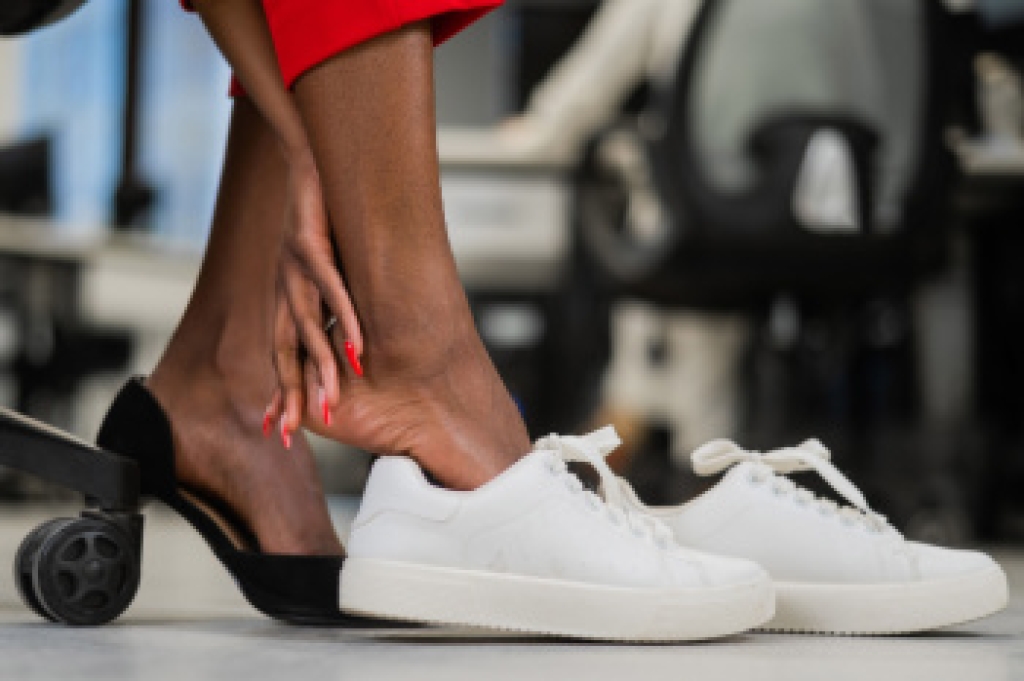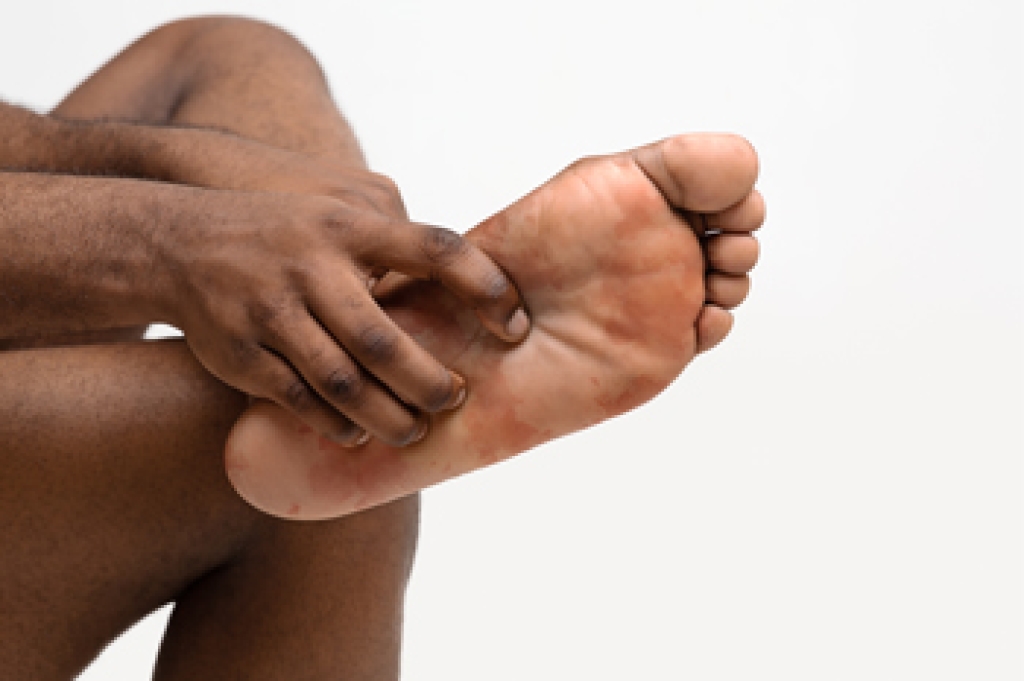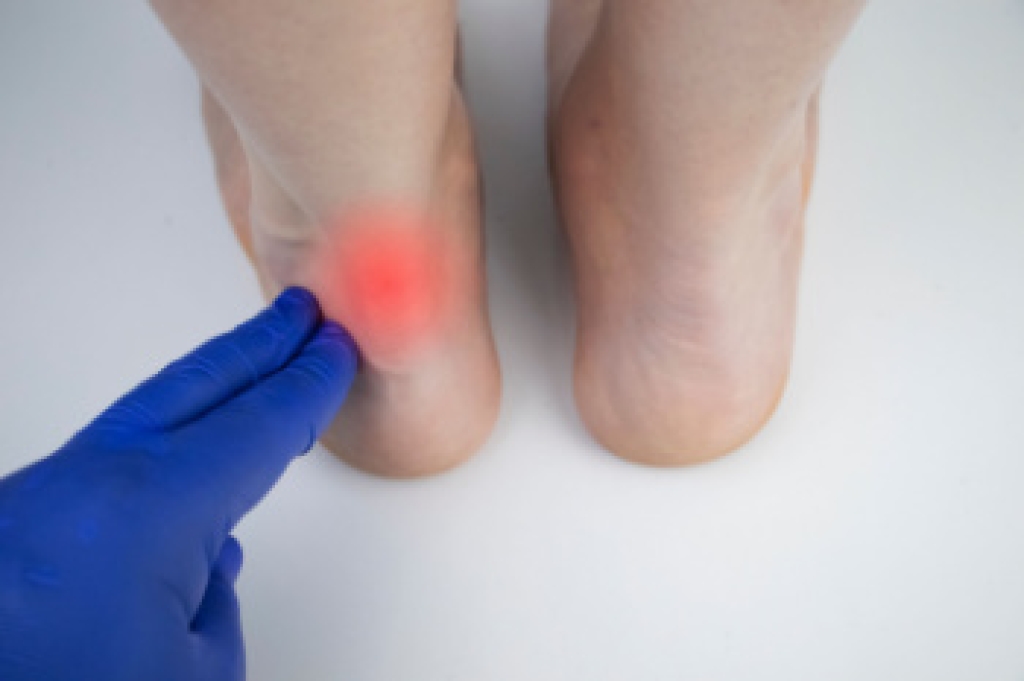Heel Pain and How to Find Relief

Heel pain is a common issue that can affect daily activities like walking or standing. One of the most frequent causes is plantar fasciitis, which occurs when the tissue connecting your heel to your toes becomes inflamed. Other causes include heel spurs, Achilles tendonitis, or overuse from activities like running or prolonged standing. To find relief, start by resting your feet and avoiding activities that worsen the pain. Wearing supportive shoes can also relieve tension in the heel. If pain persists, it is suggested that you consult a chiropodist who may recommend targeted stretches and exercises or custom orthotics, in addition to monitoring your foot health.
Heel pain is a common problem that can be caused by a variety of injuries, medical conditions, and other factors. If you suffer from heel pain, please consult with one of the chiropodists from The Footcare Centre. Our chiropodists can help you maintain the health of your lower limbs and your mobility.
When it comes to heel pain, the exact location and type of pain are important to note. Some of the conditions that may cause heel pain include:
- Plantar fasciitis - An inflammation of the ligament that runs along the bottom of the foot; it causes a stabbing pain under the heel that is at its worst when taking your first few steps after a long rest and while standing on your tiptoes or climbing stairs
- Achilles tendonitis - An inflammation of the tendon in the back of the calf; it causes pain in the back of the heel that is at its worst after resting, as well as ankle and calf stiffness, swelling, and tenderness
- Bone spurs - Bony lumps on the back of the heel bones that cause sharp pain upon first standing up; the pain becomes dull and achy over time
- Heel fractures - A break or crack in the heel bone that causes pain, swelling, and difficulty walking
- Retrocalcaneal bursitis - Swelling of the small, fluid-filled sac at the back of the heel bone; it causes pain, swelling, redness, and warmth in the back of the heel
- Tarsal tunnel syndrome - Compression of the posterior tibial nerve which causes a pins and needles sensation in the heel, foot, and calf
Your chiropodist will be able to diagnose the underlying cause of your pain and prescribe the right treatments for you. If you have any questions, please feel free to contact our office located in . We offer the newest diagnostic and treatment technologies for all your foot care needs.
Common Causes and Conditions of Foot Rash

Foot rashes can arise from various conditions, each presenting unique challenges and discomfort. One prevalent cause is athlete's foot, a fungal infection that leads to red, itchy, and flaky skin, often between the toes. Another common culprit is contact dermatitis, which occurs when the skin reacts to irritants or allergens, resulting in redness, swelling, and itching. Exposure to plants such as poison oak, ivy, or sumac can also cause rashes on the feet and ankles, as these plants contain oils that trigger allergic reactions upon contact. Symptoms may include blisters, peeling skin, and intense itching. Identifying the cause of a foot rash is essential for effective treatment and prevention. If you have developed a foot rash, it is suggested that you consult a chiropodist who can offer you effective relief and treatment solutions.
Foot pain is a common problem treated by chiropodists. If you have foot pain, please consult with one of the chiropodists from The Footcare Centre. Our chiropodists can help you maintain the health of your lower limbs and your mobility.
When you are experiencing foot pain, it’s important to note the type of pain and its location, as this can help determine a diagnosis.
Pain in the top of the foot may be caused by:
- Stress fractures
- Sinus tarsi syndrome
- Extensor tendonitis
- Tibialis anterior tendonitis
- Gout
- Athlete’s foot
- Ganglion cysts
Pain in the bottom of the foot may be caused by:
- Plantar fasciitis
- Foot cramps
- Tarsal tunnel syndrome
- Plantar fibromatosis
- Posterior tibial tendonitis
- Stress fractures
- Flat feet
Pain on the side of the foot may be caused by:
- Ankle sprain
- Cuboid syndrome
- Peroneal tendonitis
- Stress fractures
- Bunions
- Corns or calluses
- Posterior tibial tendonitis
Heel pain may be caused by:
- Plantar fasciitis
- Achilles tendonitis
- Bone spurs
- Heel fractures
- Retrocalcaneal bursitis
- Sever’s disease
Pain in the toes may be caused by:
- Gout
- Hammertoe
- Turf toe
- Bunions
- Ingrown toenails
- Blisters
- Arthritis
These and many more conditions can be treated by a chiropodist. If you have any questions, please feel free to contact our office located in . We offer the newest diagnostic and treatment technologies for all your foot care needs.
How to Diagnose an Achilles Tendon Injury

Diagnosing Achilles tendon injuries is essential for effective treatment and recovery. Common symptoms include pain along the back of the heel, swelling, and stiffness, particularly in the morning. A chiropodist will begin with a physical examination to assess tenderness and range of motion. One vital diagnostic tool is the Achilles tendon rupture test, known as the Thompson test. During this test, the patient lies face down while the examiner squeezes the calf muscle. If the foot does not move, it may indicate a rupture of the Achilles tendon. Additional imaging tests like ultrasounds or MRI scans can provide further clarity on the extent of the injury. If you have pain in the lower part of your calf, it is suggested that you schedule an appointment with a chiropodist who can perform the correct diagnostic test for an Achilles tendon injury.
Achilles tendonitis is a common injury of the Achilles tendon, a band of fibrous tissue that runs along the back of the lower leg. The Achilles tendon can also rupture, making it impossible to lift the foot. If you are suffering from heel or calf pain, please consult with one of the chiropodists from The Footcare Centre. Our chiropodists can help you maintain the health of your lower limbs and your mobility.
Causes of Achilles tendon injuries include:
- Repetitive stress or overuse
- Sudden increase in activity levels
- High impact injury
- Calf muscle tightness or weakness
- Altered foot biomechanics
- Heel bone spurs
- Underlying medical conditions that weaken the tendon
Symptoms of an Achilles tendon injury include:
- Heel and calf pain that worsens following exercise
- Chronic heel and calf pain
- Sudden pain in the back of the ankle or calf
- A popping or snapping sensation
- Thickened lump in the Achilles tendon
- Ankle and calf stiffness
- Decreased range of motion in the affected foot
- Swelling
- Difficulty walking
Treatment
- Resting the affected leg
- Applying ice
- Compressing the foot and ankle
- Elevating the injured leg
- Wearing orthotics
- Low impact exercises
- Stretches
- Strengthening exercises
- Non-steroidal anti-inflammatory medications
- Cortisone injections
- Surgery, if the tendon is ruptured
Achilles tendon injuries can be very painful and lead to reduced mobility if left untreated. If you have any questions, please feel free to contact our office located in . We offer the newest diagnostic and treatment technologies for all your foot care needs.


